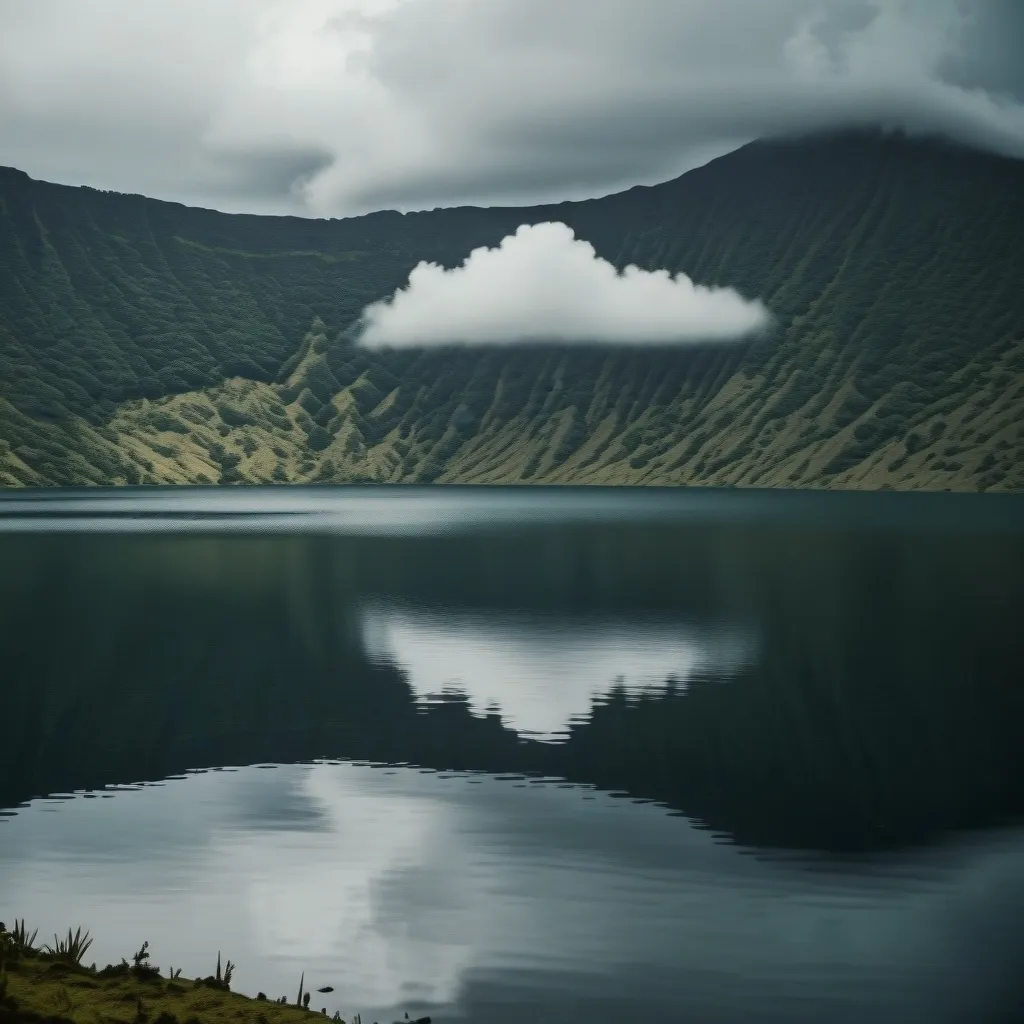Lake Nyos: The Deadly Secret Beneath the Surface
Nestled in the volcanic highlands of northwest Cameroon, Lake Nyos holds a dark secret. This picturesque crater lake, often called the “Exploding Lake,” was the site of one of the most bizarre and deadly natural disasters in recent history. On August 21, 1986, a catastrophic event unfolded that would forever change the lives of those living in its vicinity.
Imagine a peaceful night suddenly shattered by an invisible force. That’s exactly what happened when Lake Nyos unleashed its fury. A massive limnic eruption released an enormous amount of carbon dioxide (CO2) from the depths of the lake. We’re talking about 100,000 to 300,000 tons of CO2 - that’s a lot of gas!
This wasn’t your average gas leak. The CO2 formed a dense cloud that was heavier than air. It swept through the surrounding villages like a silent, deadly tsunami. Moving at speeds of up to 50 kilometers per hour, it suffocated nearly everything in its path within a 25-kilometer radius.
The nearby villages of Nyos, Kam, Cha, and Subum bore the brunt of this disaster. Entire communities were wiped out in minutes. The official death toll stood at 1,746 people and 3,500 livestock, but many believe the actual numbers were much higher.
Picture waking up to a world where everyone around you has suddenly vanished. That’s what survivors experienced. They described hearing rumbling sounds and smelling something like gunpowder or rotten eggs before losing consciousness. When they came to, they found a scene of utter devastation.
Bodies were scattered everywhere - in beds, streams, and forests. It was as if people had been running from an invisible monster. Even insects and wildlife weren’t spared, leaving an eerie silence in the wake of the disaster.
Now, you might think this sounds like something out of a horror movie. For the local population, it might as well have been. Many attributed the disaster to supernatural forces. There were stories of vengeful spirits and ancestors, and even talk of a curse on Lake Nyos.
One popular myth involved a prominent tribe chief who had died three years before the disaster. Some believed he was furious from the afterlife and had caused this catastrophe. It’s easy to see why people would turn to such explanations when faced with something so inexplicable and terrifying.
But while the locals were grappling with mythological explanations, scientists were determined to uncover the truth. They flocked to Lake Nyos, initially thinking that the long-dormant volcano under the lake might have erupted. But as they dug deeper, they uncovered a more complex and insidious geologic phenomenon.
It turns out that Lake Nyos had been silently accumulating CO2 for years, possibly centuries. This gas came from magma degassing deep beneath the lake’s surface. The CO2 dissolved in the water, creating a giant, hidden time bomb just waiting to go off.
But what pulled the trigger? That’s still a topic of debate among scientists. Some think a landslide or a small volcanic eruption on the lake bed might have started it all. Others suggest that a sudden cooling of the upper layer of water, maybe from heavy rain or a strong wind, could have caused the deep water to mix with the surface layers, releasing the stored CO2. Despite all these theories, the exact cause remains a mystery.
The effects of this disaster weren’t limited to just the immediate area. Survivors who managed to escape the gas cloud didn’t get off scot-free. Many suffered from severe respiratory problems, skin lesions, and paralysis. The situation was so dire that the government ordered immediate burials to prevent what they initially thought might be an epidemic. Soldiers dug mass graves for the dead, adding to the surreal and tragic atmosphere.
In the years following the disaster, scientists and engineers got to work on preventing a repeat of this tragedy. They installed a degassing system at Lake Nyos to reduce the concentration of CO2 in the waters. It’s a simple, low-tech solution, but it’s been effective in mitigating the risk.
But Lake Nyos isn’t the only potential ticking time bomb out there. The disaster highlighted the dangers of other lakes with similar properties. Lake Kivu, another African lake, is known to have similar characteristics and poses a significant threat to the millions of people living nearby. Efforts are underway to degas Lake Kivu, a task made even more urgent by its proximity to the highly active Nyiragongo volcano.
The story of Lake Nyos is more than just a tale of natural disaster. It’s a stark reminder of the power and unpredictability of nature. It shows us how thin the line between myth and reality can be, especially when faced with something so incomprehensible.
Think about it. For centuries, local folklore warned of the dangers of Lake Nyos. People spoke of curses and angry spirits. While these stories might seem far-fetched to us, they were rooted in a very real danger. The myths served as a warning, passed down through generations, of the lake’s deadly potential.
But it took a catastrophe of this magnitude to bring scientific attention to the problem. This underscores the importance of blending traditional knowledge with modern scientific understanding. Local communities often have invaluable insights into their environments, passed down through generations. When combined with scientific investigation, this knowledge can be crucial in preventing future tragedies.
The Lake Nyos disaster also highlights the importance of being prepared for the unexpected. Who would have thought that a peaceful lake could suddenly turn into a deadly gas chamber? It’s a reminder that we need to be vigilant and proactive in understanding and mitigating potential natural hazards, even in seemingly safe environments.
Moreover, this event emphasizes the global nature of scientific challenges. The disaster at Lake Nyos led to increased study of similar lakes around the world. Scientists from various countries collaborated to understand the phenomenon and develop solutions. This international cooperation is crucial in addressing global environmental challenges.
The human aspect of this tragedy is equally compelling. The survivors of the Lake Nyos disaster showed incredible resilience in the face of unimaginable loss. Many lost entire families and had to rebuild their lives from scratch. Their stories of survival and recovery are a testament to the human spirit’s strength and adaptability.
Today, Lake Nyos stands as both a reminder of past tragedy and a symbol of scientific progress. The degassing systems installed in the lake serve as a constant guardian against future disasters. Tourists can now visit the lake safely, though the memory of that fateful night in 1986 still lingers.
The Lake Nyos disaster has also had a lasting impact on the field of limnology - the study of inland waters. It led to increased research into the phenomenon of limnic eruptions and the development of early warning systems for potentially dangerous lakes. This knowledge is now being applied to other at-risk areas around the world.
As we look back on the Lake Nyos disaster, we’re reminded of the delicate balance between humans and nature. We live on a planet full of wonders, but also potential dangers. Understanding and respecting these natural forces is crucial for our survival and well-being.
The story of Lake Nyos is more than just a cautionary tale. It’s a call to action for continued scientific research, international cooperation, and respect for local knowledge. It reminds us that even in the most remote and seemingly tranquil places, nature can unleash its fury in the most unexpected ways.
In the end, the Lake Nyos disaster is a powerful reminder of our place in the natural world. We are not its masters, but its stewards. Our task is to understand, respect, and coexist with the forces of nature. Only then can we hope to prevent future tragedies and build a safer, more sustainable world for generations to come.






